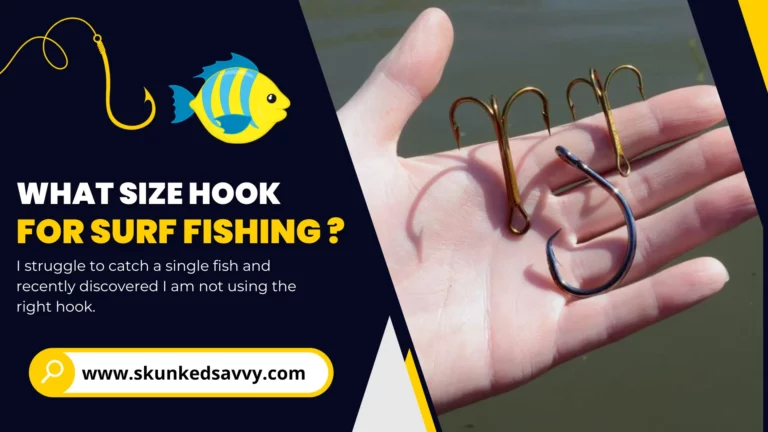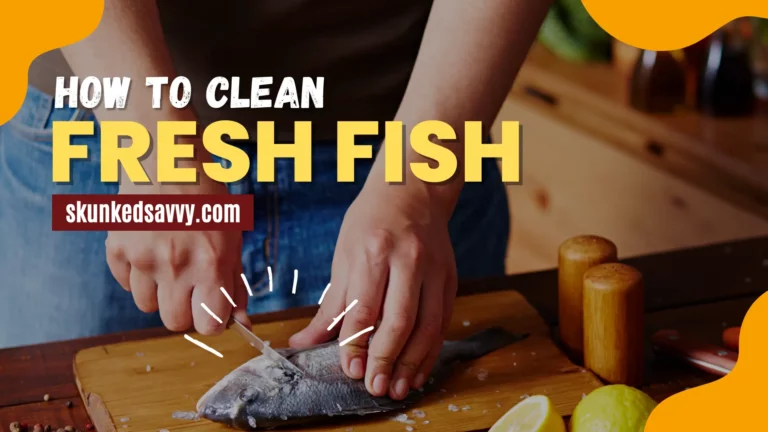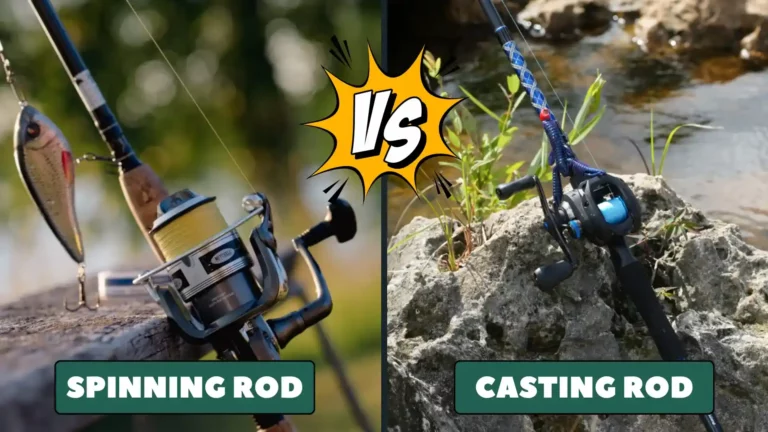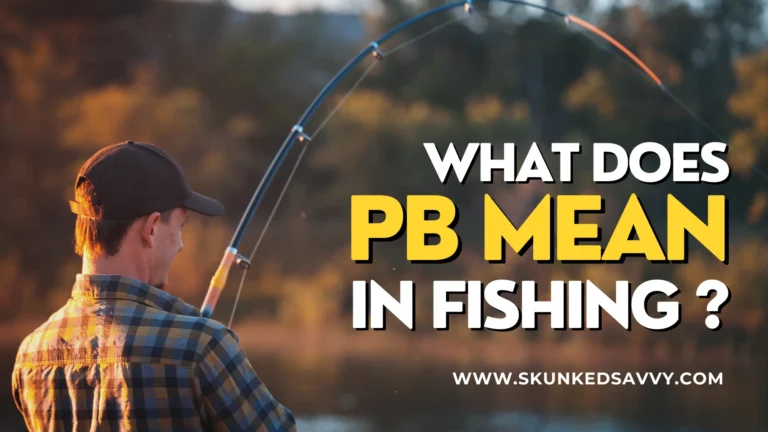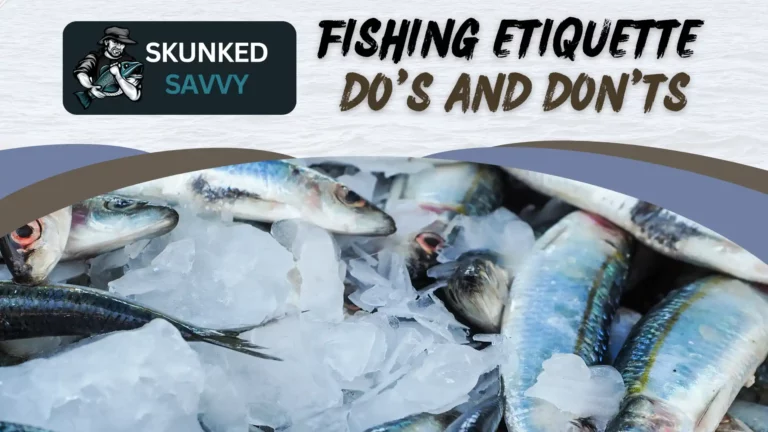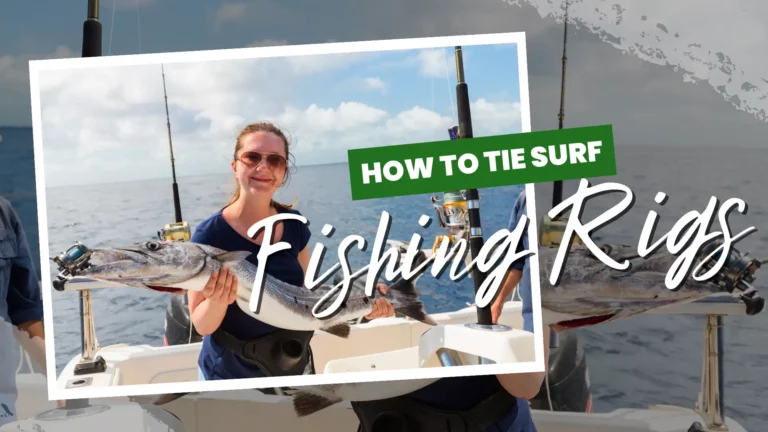How to Fly Fish? Basics for Getting Started
Fly fishing is different from other standard types of fishing as it uses artificial lures known as flies to catch fish. These lifeless flies are made up of feathers, hairs, and other materials that make them attractive and resemble real insects.
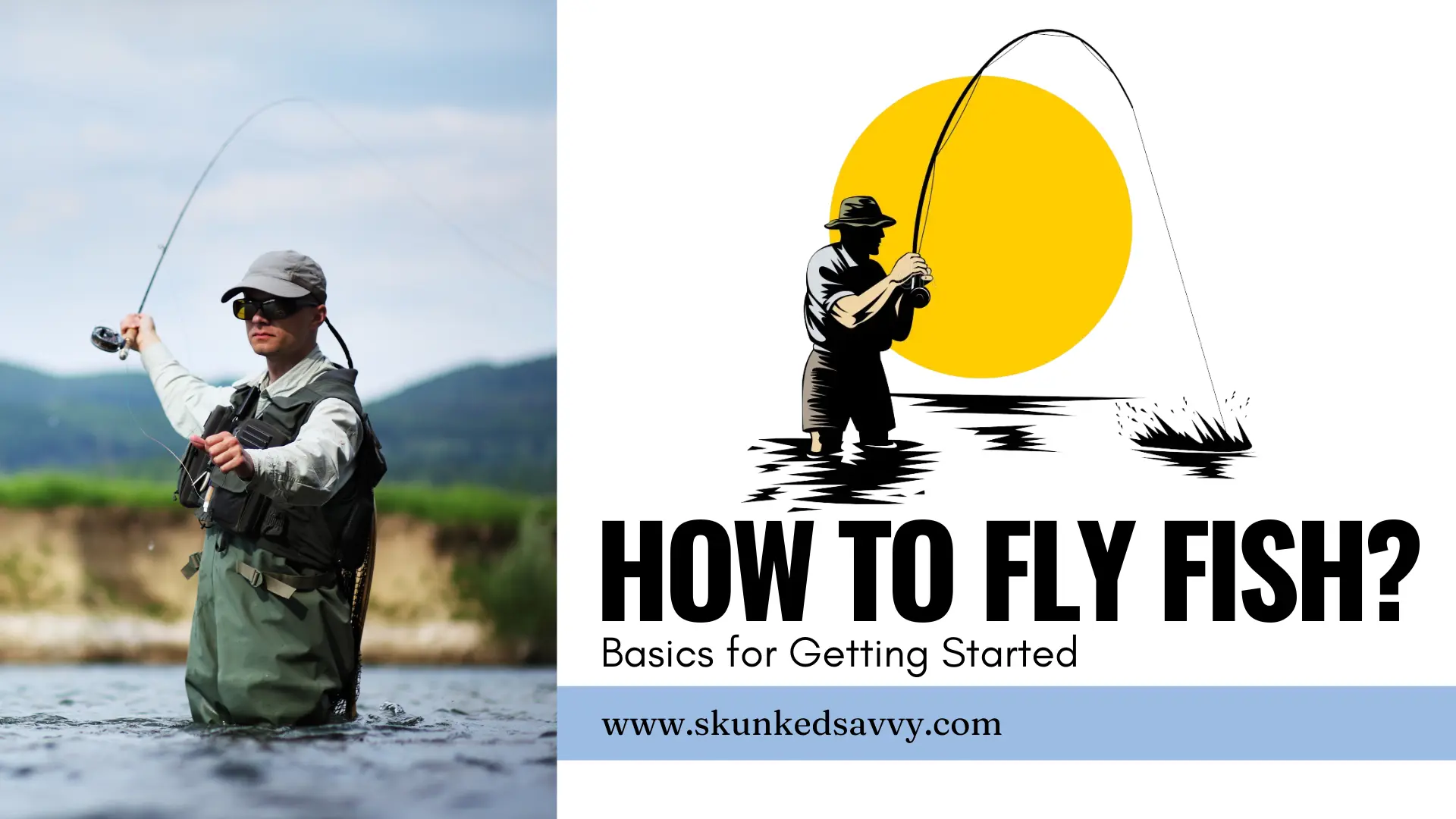
Important
Unlike general fishing techniques, the anglers prefer to go with fly fishing flies, which are fake flies that work like real insects when it comes to catching fish.
It not only is overwhelming but also confusing and quite challenging for beginners to learn how to fly fish, but because you have reached here, you will learn and understand everything. This piece of writing will help you learn all the necessary steps and everything that you should know before starting fly fishing. Let’s look at the details below.
How To Fly Fish?
The guide talks about step-by-step procedures to answer how to fly fish and also provides beginners with all the necessary information that they should know beforehand. Fly fishing definitely needs angling skills and some advanced level knowledge related to fishing in order to get started. Well, that is quite the most challenging part.
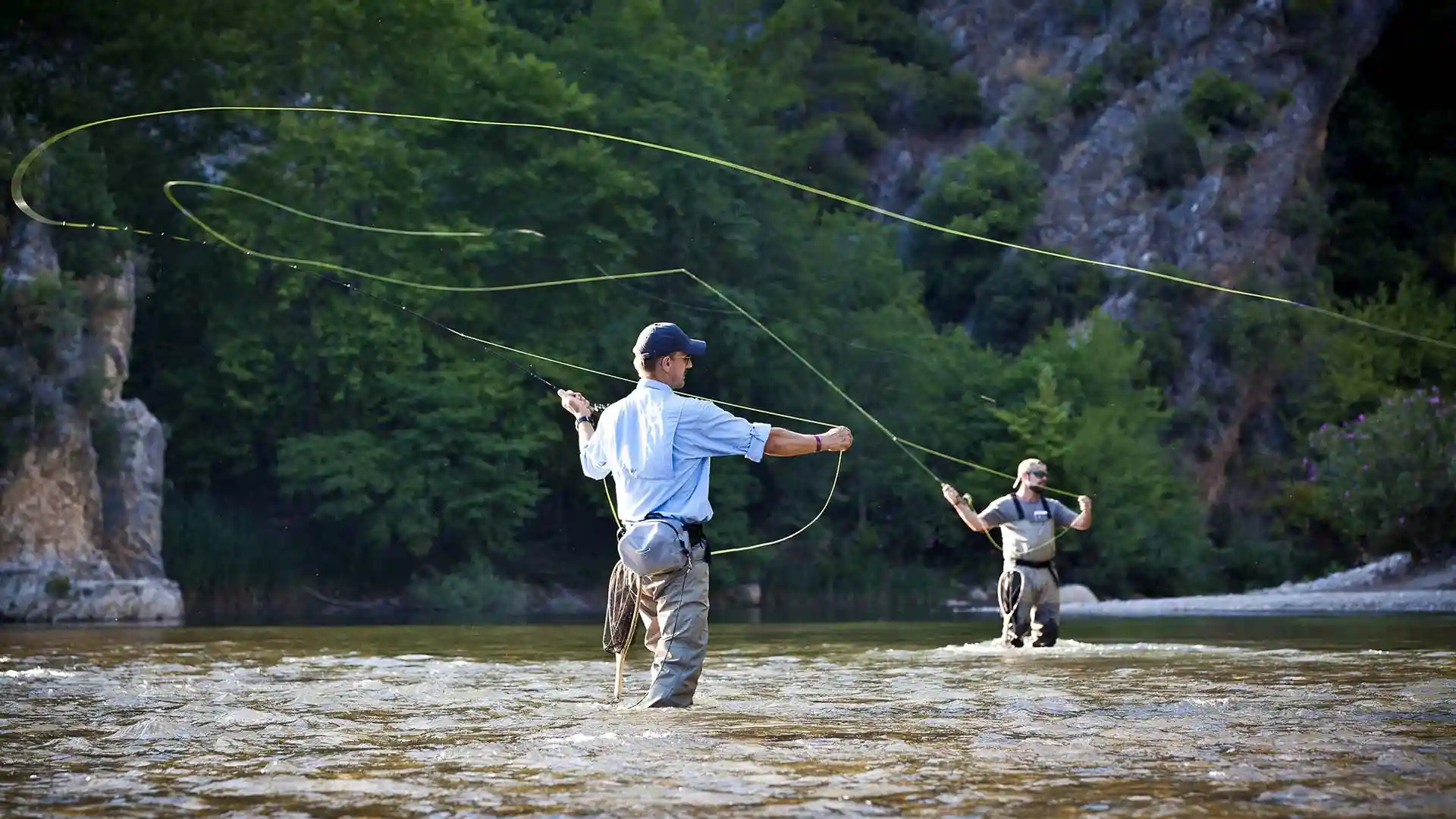
That is why we have created this article to make it more accessible and comfortable for you to learn the exact procedure of how to fly fish productively. But wait, before that, we will focus on what fly fishing is and what is the difference between fly fishing and standard fishing.
What is Fly Fishing? Difference Between Fly Fishing And Standard Fishing
The fishing technique in which anglers use artificial objects looking like flies to imitate the lure to catch fish is called fly fishing. Fly fishing uses ultra-lightweight lures to copy the aquatic insects so that more fish can be attracted, ultimately giving you more food to feast on. These artificial flies are made up of different objects that make them almost similar to the real lures.
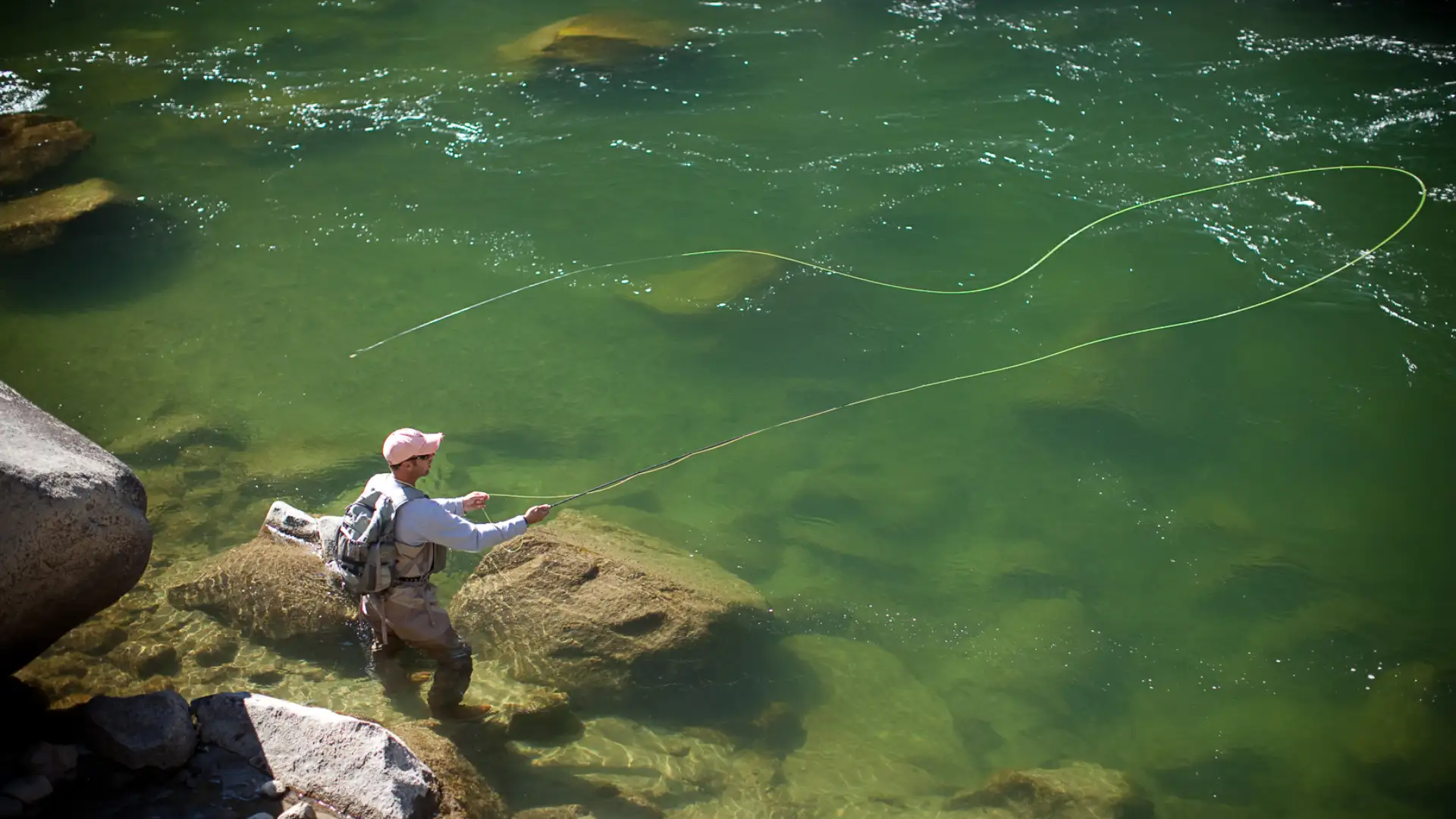
They attract the fish and are affordable. Moreover, keep in mind that fly fishing is quite challenging and a different skill you must learn as it is not simply a throwing of heavy lures in the world water like bait fishing or spin fishing.
Important
You have to generate the energy in the rod to create the momentum so that the fly you have attached to the rod reaches its destination.
Step By Step Process To Fly Fish
Following are the details of the five-step procedure to fly fish properly. Make sure to pay attention to the details to understand what essential gear you should have beforehand and what step-by-step procedure will help you fly fish appropriately. We will first look at the vital gears, then will look at the procedure.
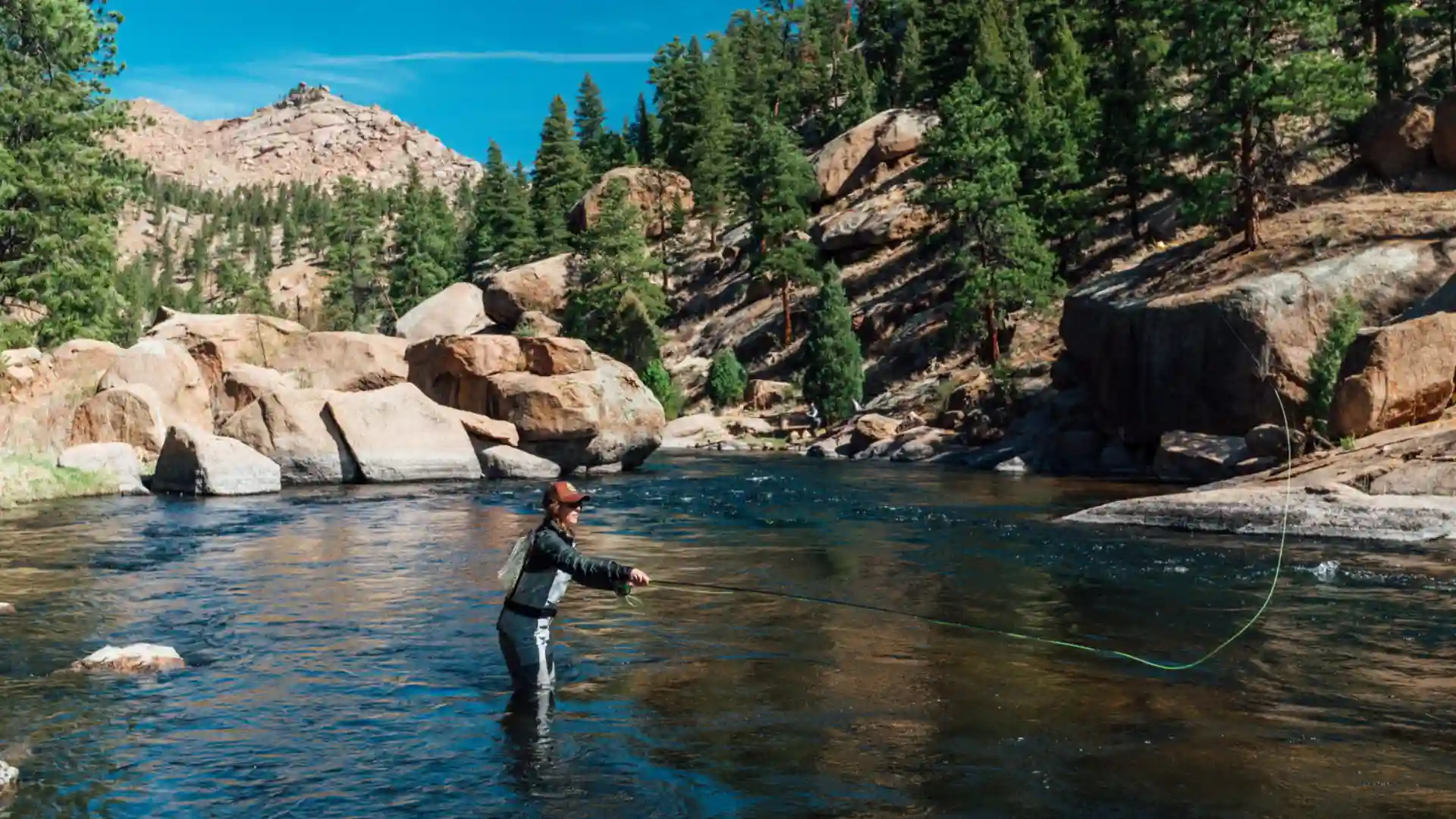
Fishing Gears You Need
Following are the essential gears you should have before starting fly fishing adventures. These fly fishing gears are what most anglers consider the necessities for a beginner to start fly fishing adventures and have proper fun. Make sure to understand the list and ensure you have everything beforehand.
- Polarized sunglasses
- Fly rod
- Fly line
- Fly reel
- Leader
- Net
- Nipper
- Tippet
- Hemostat/pliers
- Flies
5 Steps To Fly Fish Properly
Use Two Stroke Cast; If You Have Got The Space
A two-stroke cast is ideal to use if you have lots of space around you and you’re on a clear bank. Using a two-stroke cast is basically the primary casting method. So, if you have enough space around you and there are no hanging trees, you can go with this step-by-step procedure for casting.
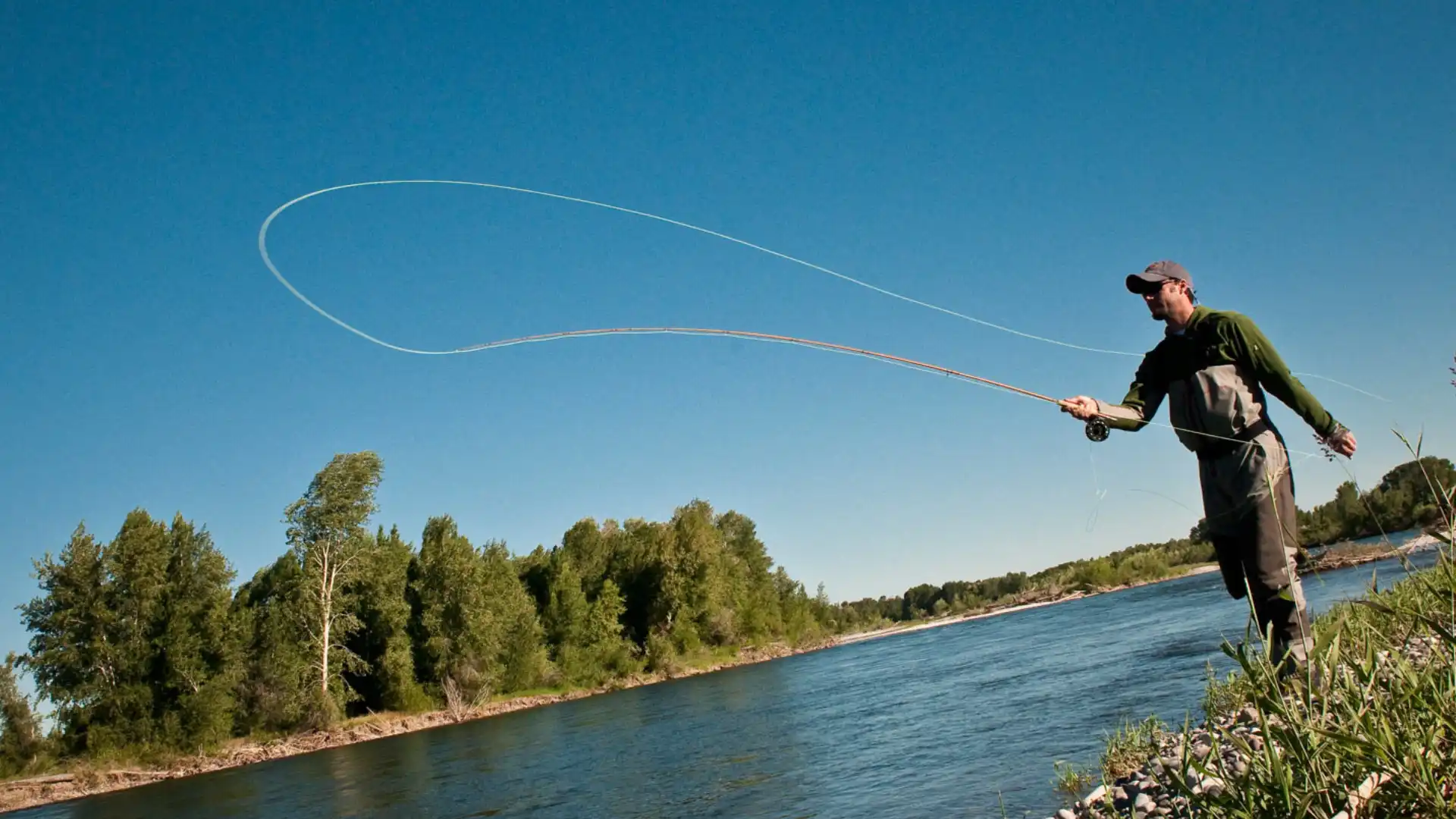
- Take out the line with a length of around 3 rods.
- Now check for the tangles in the line and straighten them if there are any.
- Now, hold the fly fishing rod or combo in your hand. Make sure to hold it in the dominant hand.
- Now, whip the rod tip up and back in a stable and balanced movement.
- Make sure that you are not whipping the rod too far at your back. You need to stop the whipping when the rod tip is slightly behind you.
- Now, observe the line as it unfolds. The line is now extending.
- Before it just straightens out completely, you need to throw the rod in a forward manner to send the line into the surface of the water, and you have done with two-stroke casting.
Use A Roll Cast; If You Have No Space Behind You
Now, in case you have no space behind you, above you, or in front of you here, you have to try a roll cast, as it will work better and more productively. It is almost similar to a two-stroke cast, but it does not demand much space. What you have to do is to,
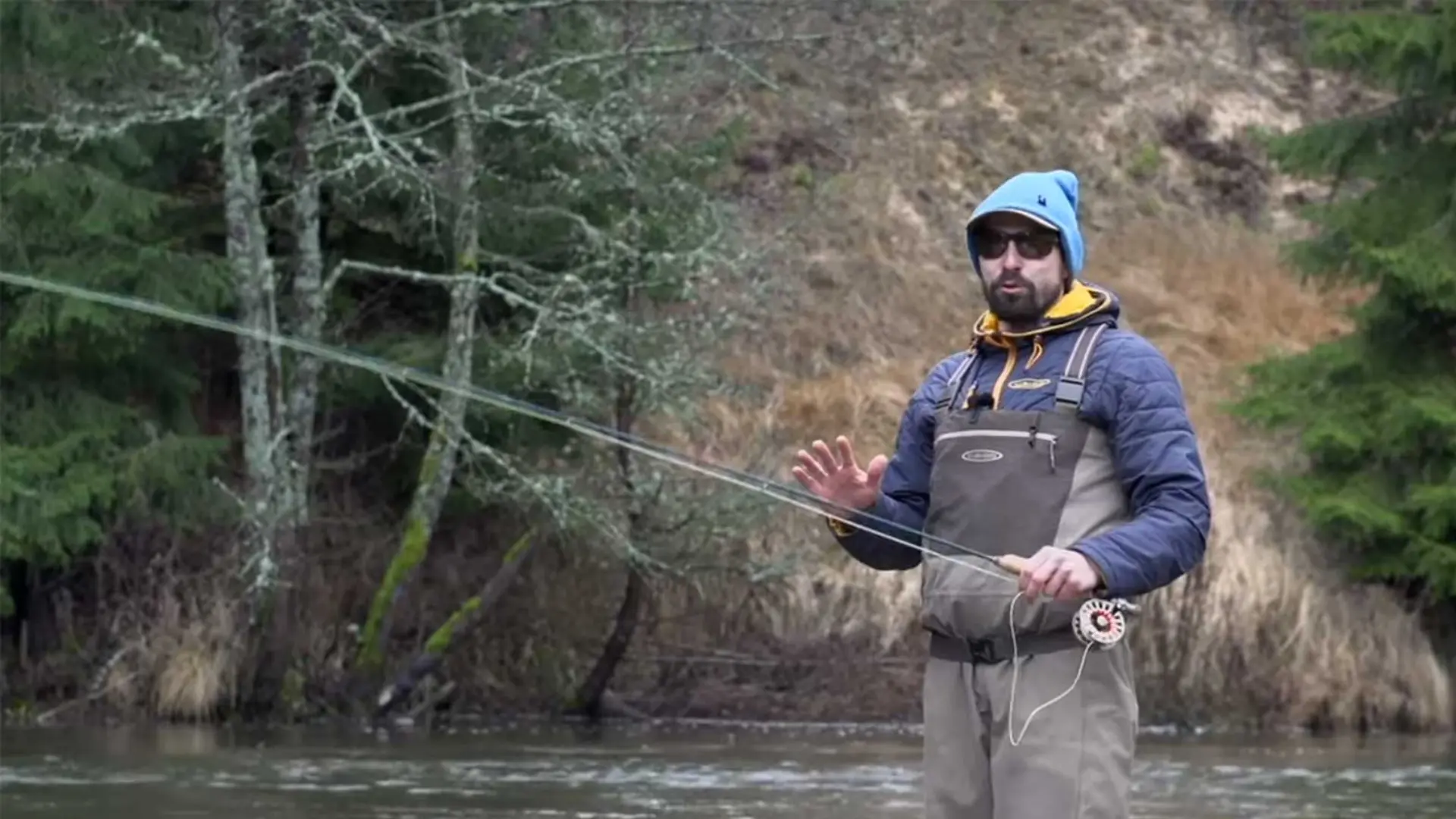
- Hold the fly fishing rod in your dominant hand, and make sure to hold it in front of you.
- Look for the tangles in the line and straighten them if there are any.
- Now, bring back your hand in which you are holding the rod.
- Make sure to place the tip above your casting shoulder and try your best to adjust your hand in a way that a small piece of line is hanging just behind you while that tip is above your casting shoulder.
- Move it forward slowly at the start and then speed up as you bring your arm down.
- Observe keenly and wait until the rod tip is angled in an upward direction.
- Now, the line loop will unwind and will cast into the water surface.
- Now you are done with roll casting.
Make Your Fly Catchy For The Fish
Pro Tip
Ensure your fly is attractive to the fish and that it mimics just a real invertebrate from physical appearance to its movements.
For that purpose, you have to make sure that the movement of the fly is also similar to the actual insect. You have to give the line light twitches to initiate natural movement. You have to make sure that your rod is moving right to left or left to right in a way the insect moves from one area to another. Try your best that your fly movement is also resembling the actual insect.
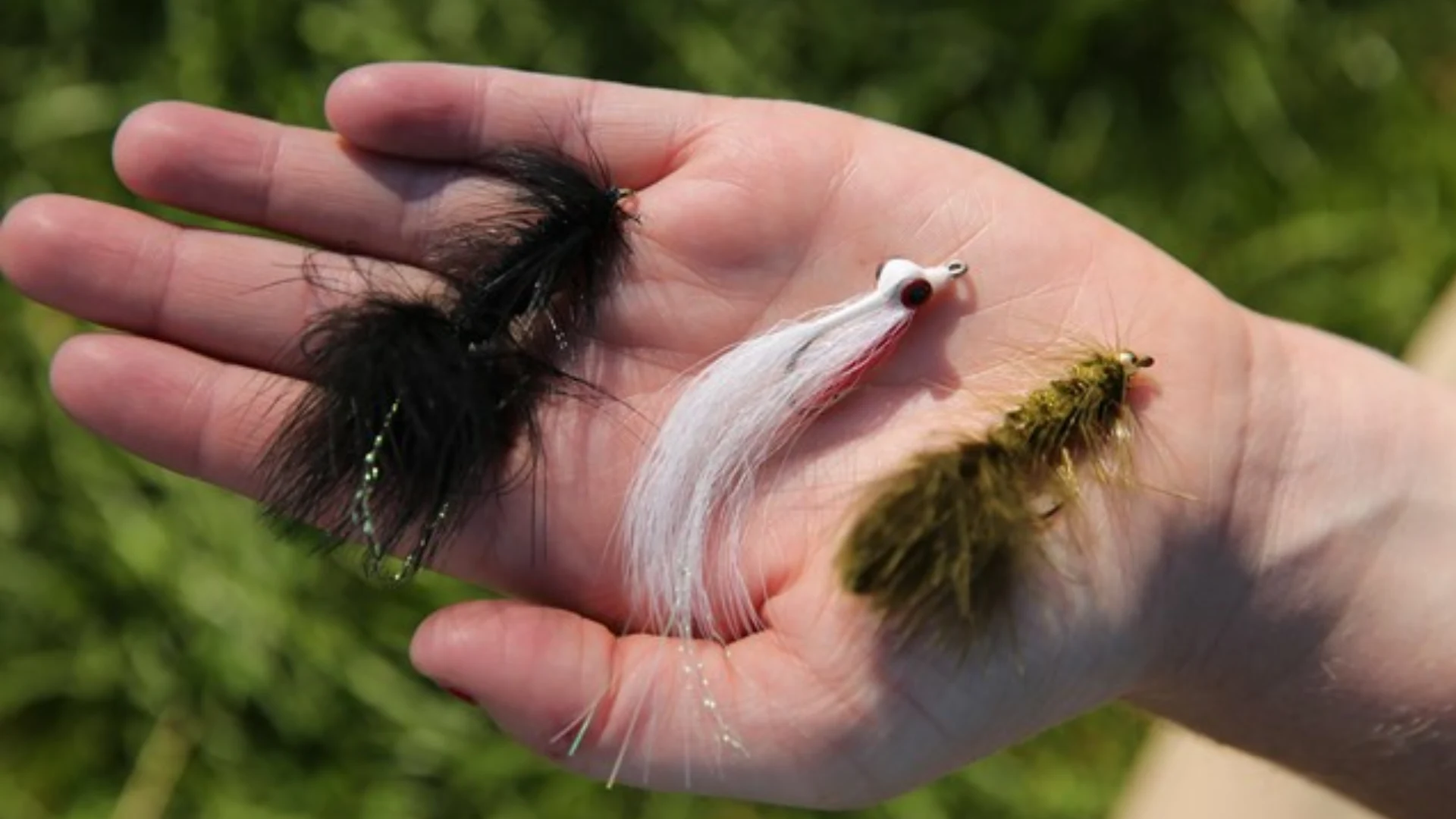
Hook The Fish After Getting A Bite
Now, wait until you get a bite from the Fish on the fly. Once you get a bite from the fish, hook the fish to make sure that the fish does not get away from the line. Following are the tips and tricks to help you hook the fish appropriately.
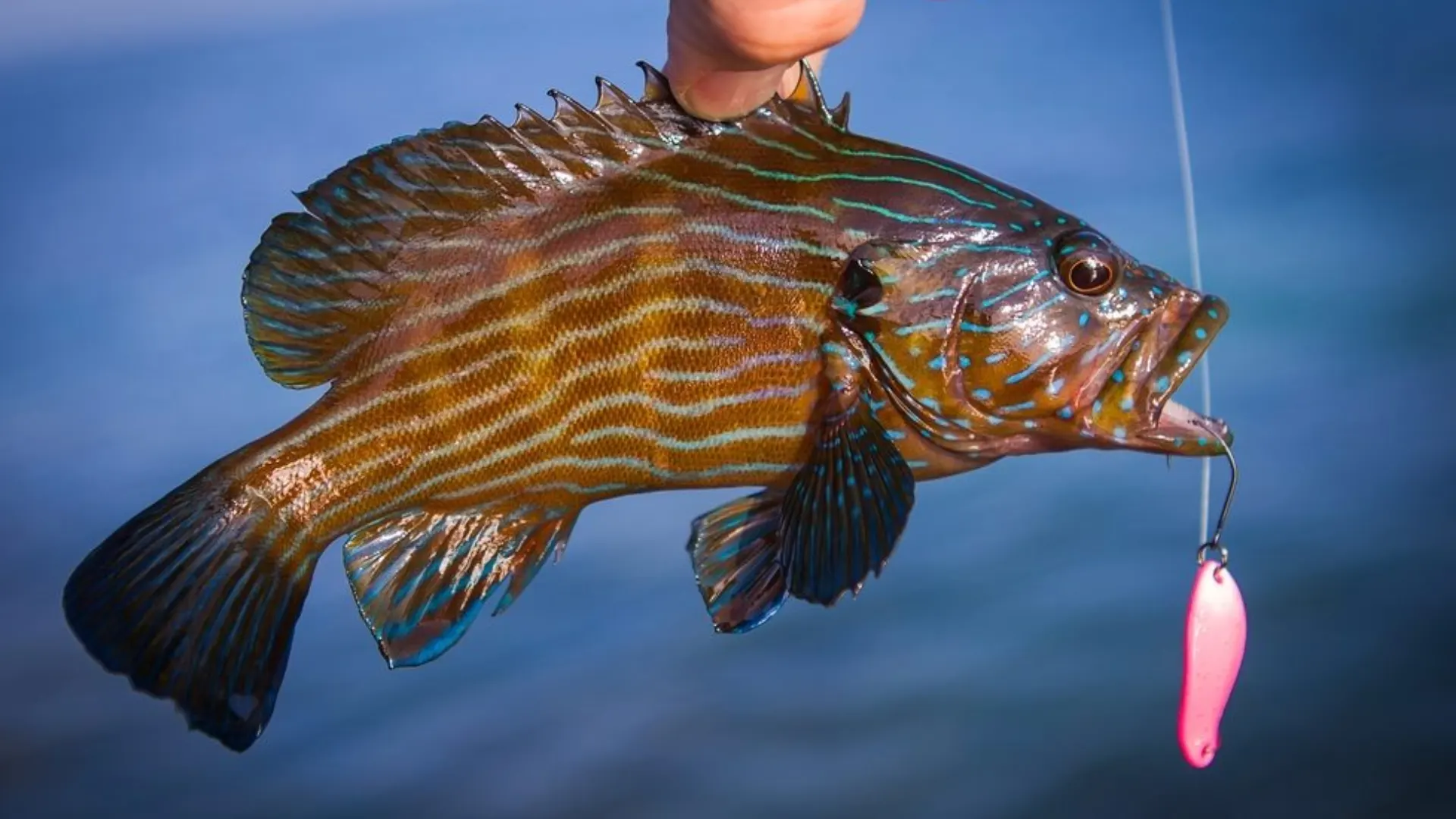
- Set those hooks properly in the mouth of the fish so it does not let the fish go.
- Make sure the rod’s tip is low to the water.
- Make sure not to quickly or rigorously move the rod tip in the upper direction, as it creates more complications in the process of fish reeling.
- If you notice that you are catching a big fish, what you have to do is apply the pressure with your palm.
- Try your best to hold the line as much as possible in order to avoid excess slacking in the line.
- Keep in mind to hook the fish properly to ensure the fish do not go away.
Net Your Fish
Now, as you hook the fish correctly, you will notice the fish starts to fight. There are chances that it moves in the upward and downward direction and creates jerking in the line.
The important thing is to let the fish fatigue up on its own. As it, after getting tired up, it will rest and then you can net it. In order to make sure that you are catching the fish properly without missing it, you have to keep in mind the following points to ensure that you are catching the fish and netting it appropriately. You can also check, the best fly fishing waders.
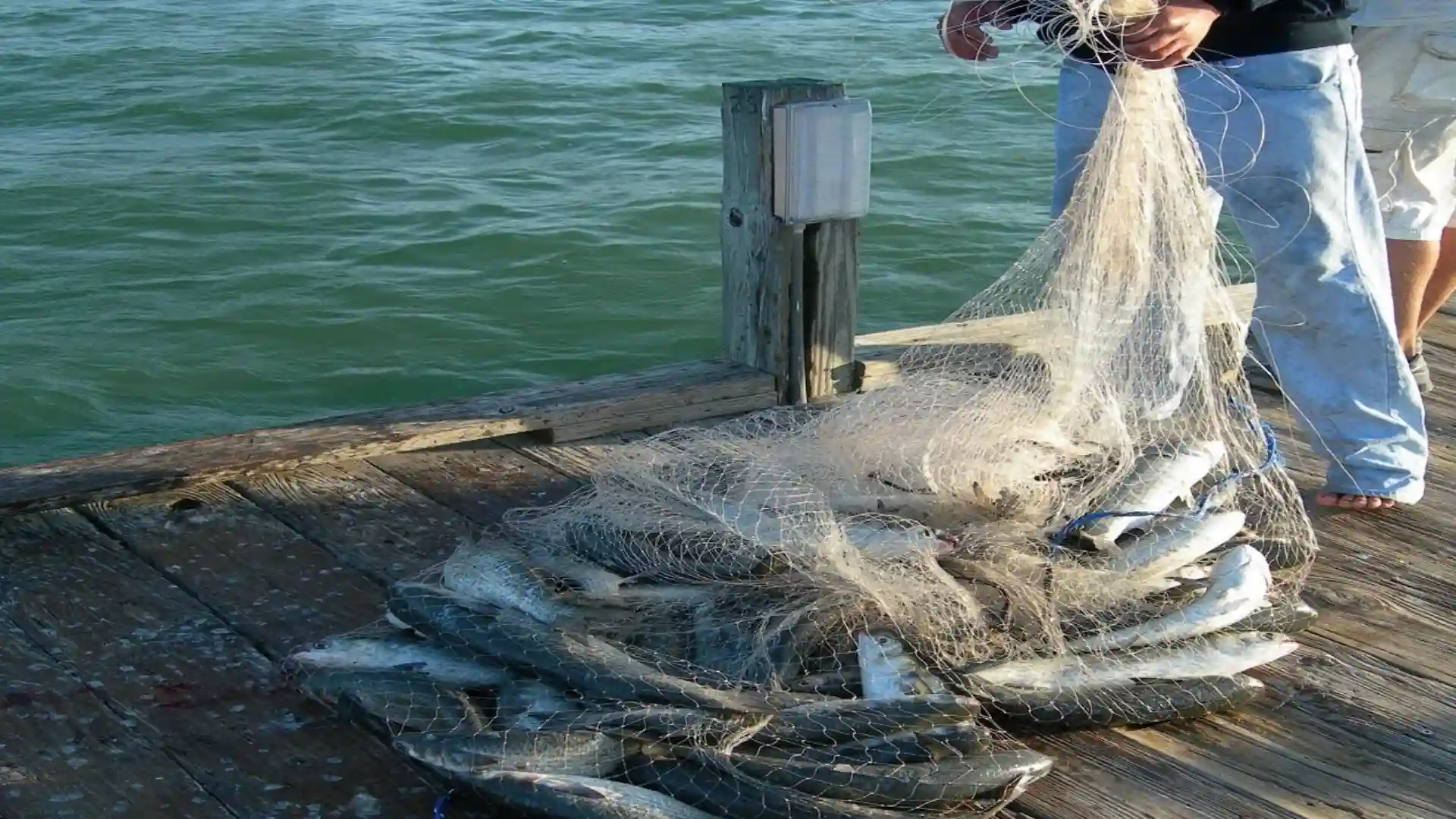
- Avoid lifting the rod in the upper direction as it can put extra pressure on the rod that might break the rod.
- Keep the fish in the water for as long as you can.
- Now, hold the net into the appropriate position and pull the fishing line so that the head of the fish comes in contact with the net’s rim first.
- Look until the body of the fish crosses the net’s rim.
- As soon as it crosses the net’s rim, flick the rim in an upward manner to make sure that the fish does not escape.
- At the same time, lift the net out of the water to ensure that the fish reaches the bottom part of the net.
- Now, make sure to carefully unhook the fly from the mouth of the fish.
- You must be careful while doing that in order to avoid bruising, cutting, or hurting both you and the fish.
FAQs
What is the best age to start fly fishing?
Starting right from a younger age is more beneficial for you. Those kids who are between the ages of 8 and 12 years enjoy fly fishing the most of all ages.
Does fly fishing use hooks?
Yes, fly fishing most often uses hooks in the vast majority of cases. You can get the hook according to your need, purpose, and what suits you the most. Moreover, there are numerous fly fishing hooks that are available in the market with a variety of choices to give you the option to select the most appropriate one.
What is the best season to fly fish?
Although you can fly fish throughout the year, the months between March and October are said to be the most beneficial and productive. Keep in mind November, December, January, and February offer you limited and less productivity of fish, so it’s better for you to opt for an alternative month.
How are fly fishing flies made?
Fly fishing flies are made by attaching animal fur, small feather pieces, and other materials that resemble real animals and flies into a hook together. They are designed in an attractive style to attract the fish and make fly fishing more productive and beneficial.
Final Thoughts
Although fly fishing is demanding and challenging, it is one of the most entertaining types of fishing that most anglers prefer to go with. It is different from spin fishing, bait fishing, or other general types of angling and requires some basic skills and knowledge of fishing to start.
This article mentioned above tells you everything about how to fly fish, the essential fishing gear you will need, and the step-by-step procedure that describes how to fly fish properly. Make sure to pay attention to the details and understand each and everything mentioned above so you do not miss anything important during fly fishing.

